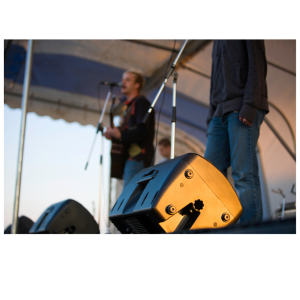Environmental compliance noise monitoring is a crucial practice for ensuring that industries and workplaces adhere to regulations designed to protect workers and the community from harmful noise levels. Understanding the key concepts and tools involved in noise monitoring is essential for compliance and effective noise management.
Major Industries Requiring Noise Monitoring
Several industries are subject to noise monitoring compliance due to their high noise-producing activities. These include:
- Manufacturing and heavy industry

- Construction
- Mining
- Transportation
- Entertainment venues
Classes of Sound Level Meters
Sound level meters are divided into two classes based on their accuracy and frequency range:
- Class 1: These are more accurate with a wider frequency range and are used for research and legal purposes.
- Class 2: These have a broader tolerance for error and are typically used for general noise surveys and compliance monitoring.
Decibels and Noise Measurement
Noise levels are measured in decibels (dB), which represent a logarithmic scale of sound pressure relative to a reference level. The decibel scale helps in quantifying sound levels and is crucial for assessing noise exposure and compliance with standards.
Key Noise Metrics
- Lmax and Lmin: These represent the maximum and minimum sound levels recorded during a measurement period.
- Peak Level (Lpeak): This is the highest instantaneous sound pressure level detected.
- Leq: The equivalent continuous sound level, averaging fluctuating noise levels over time to provide a single value representing the total energy of the noise.
- Percentile Levels (Ln): These indicate the noise level exceeded for a certain percentage of the measurement time, such as L10 or L90.
Noise Exposure and Dose
Noise dose refers to the cumulative exposure to noise over a specified period, often measured as a percentage of the permissible exposure level (PEL). For example, a dose of 100% equates to the maximum allowable noise exposure for an eight-hour workday. The dose depends on both the noise level and exposure duration.
Noise Measurement Techniques
- Spot Measurements vs. Long-term Monitoring: Spot measurements involve short-term noise assessments, while long-term monitoring captures noise data over extended periods to identify trends and patterns.
- Stationary vs. Personal Dosimeters: Stationary sound level meters are placed at fixed locations, while personal dosimeters are worn by workers to measure individual noise exposure throughout their shift.
Emerging Technologies and Trends
- Advancements in Noise Monitoring: Innovations such as wireless sensors, real-time noise monitoring systems, and AI-driven data analysis are making noise monitoring more efficient and accurate. These technologies allow for continuous tracking and instant alerts when noise levels exceed permissible limits.
- Sustainability and Noise Monitoring: Effective noise control contributes to sustainable practices by reducing environmental noise pollution, enhancing the quality of life for communities, and promoting a healthier work environment. Noise monitoring data can also support environmental impact assessments and corporate social responsibility initiatives.
Talk to one of our friendly team about how HydroTerra can support with your noise monitoring requirements today.
Contact Us





